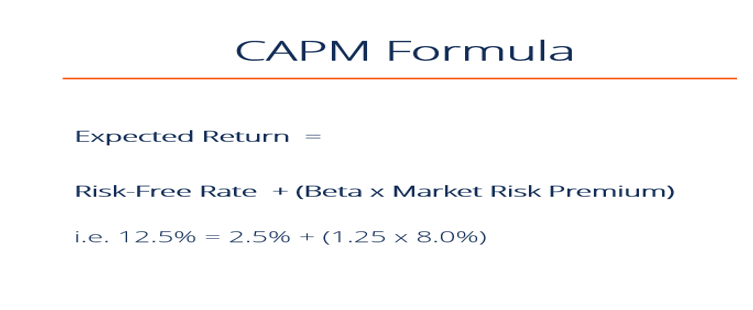Capital asset pricing model (CAPM) :
-
If there is a borrowing/lending opportunity at a ‘risk-free’ rate, all individuals will have the same preference as to location on the efficient frontier.
-
Individuals will achieve their maximum utility through borrowing or lending.
-
CAPM says that the expected return from a risky investment is equal to the risk-free rate (rf) plus a risk premium.
-
The CAPM risk premium equals the average risk premium for all risky assets (the expected level of return for all risky assets (rm), less the risk-free rate (rf)) multiplied by the riskiness of the particular asset concerned relative to the average level of risk (β).
-
CAPM concerns itself only with systematic risk, that is, it says that there are no rewards (in terms of enhanced returns) for bearing specific risk. This is logical because the latter can be avoided by diversification.
-
It is reasonable to look to the risk/return profiles of stock market equities and to use this to determine discount rates for risky projects because
-
the stock market is a free and efficient market where the prices of assets with known risk/return profiles can be observed;
-
for shareholder-wealth-enhancing businesses, it is through the market price that this goal will substantially be achieved.
-
Despite its theoretical logic, CAPM has been consistently demonstrated, over recent times, to be seriously deficient in assessing risk and indicating the appropriate required rate of return for bearing risk.
-
According to survey results, CAPM is widely used in practice by businesses to derive discount rates, particularly for an investment of a type that the business does not usually make, by looking at the betas of businesses that specialise in that type of investment.
-
Managers diversifying within the business may represent an agency cost to the shareholders.
-
The arbitrage pricing model is similar to CAPM, but it relies on more parameters about the particular investment and the state of the world. It has been shown to be quite effective and is likely to be taken more seriously, in the light of the serious criticisms of CAPM.








